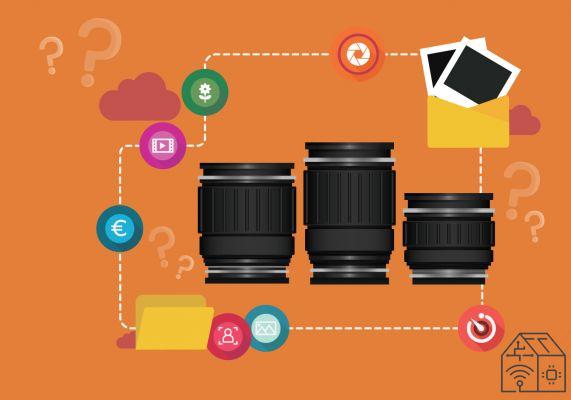
How to choose a goal
If you've just bought a reflex or mirrorless camera, I guess the idea of? buy a new lens. It is definitely the right thought to do, because if you have bought the camera only with the standard lens of the kit, know that it can never show you its full potential. Yes, because the optics of the kits that are on the market are not exactly the best you can have, indeed consider it a limit. In this guide I'll explain how to choose a goal, Which ones are they the factors to consider and where to start building your photographic kit.
The standard lenses that are sold in kits with the cameras, usually with those of the medium-low range, are zooms with a short focal range, often even lower than that of many compact cameras. The most common kit lenses are in fact 18-55mm or 14-42mm, depends on camera manufacturer and genre. To be clear we are talking about zoom 3x and there are compacts that easily reach 20x. Moreover, even from a constructive point of view it is not that they are the best.
But don't immediately think that there is a second important expense ahead of you and that you should never use your kit optics, because in recent years, however, great strides have been made.
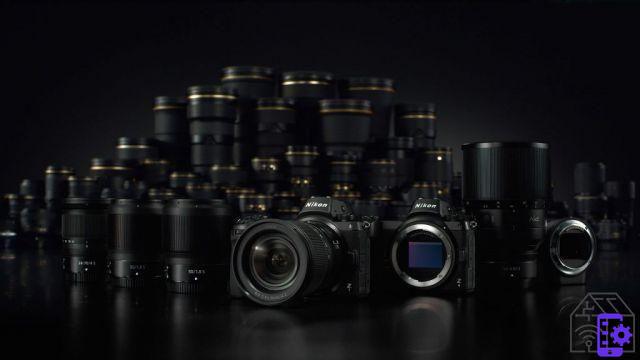
And if you haven't bought your camera yet but are thinking about it, you might want to read mine guide to buying a camera.
There are some important considerations to make before purchasing a lens, which I want to share with you to help you make an informed choice.
When you buy an interchangeable lens camera, be it SLR or mirrorless, you automatically make a choice and accept the consequences that come with it. The first is having to choose lenses from the same brand or those made by third parties for that particular manufacturer. Trivially a Canon lens doesn't have the same mount for Nikon's bayonet, so it will only go on Canon cameras. But, even within the same brand, there may be differences, as between mirrorless and reflex systems, but not only.
There are exceptions though: Panasonic and Olympus share the same attachment for Micro Four Thirds cameras and again Panasonic, this time together with Sigma and Leica share the L-Mount attachment developed by the German company. Basically what I'm trying to tell you is that the first thing to check is to make sure your camera has the right mount for the lens you're going to buy.
How to choose a lens: the focal length
Have you ever wondered what exactly those measures that characterize all the objectives represent? What exactly does 18-55mm mean? These figures represent the focal length of the lens. Focal length refers to the distance between the optical center of the lens and the plane of focus (which in digital cameras is the sensor) and is expressed in millimeters. This length also determines the belonging to one of the macro categories into which we can divide the lenses: fisheye, wide angle, normal, telephoto and macro lenses.
The objectives fisheye, translated literally "fish eye", are those that offer an extreme wide viewing angle and that is why they are also called ultra-wide angles. Lenses with a focal length shorter than 14mm fall into this category.
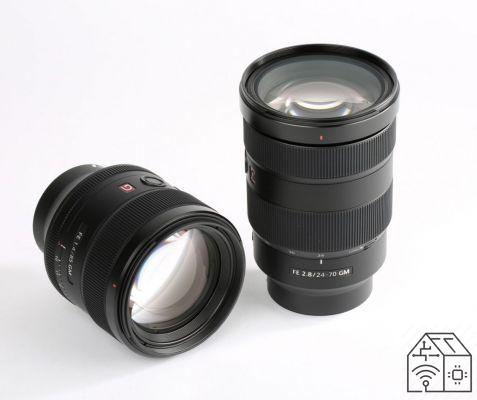
The objectives wideangle, between 14mm and 35mm, are used above all for landscape and architectural photography due to the wide angle of view offered, ideal in these areas.
The objectives normal or standard they are so defined because they are those that have a viewing angle almost equivalent to that of the human eye. They have focal lengths around 50mm and in practice reproduce things as we see them with our eyes.
I telephoto lenses, on the other hand, they have a focal length greater than 70mm and their main feature is that of enlarging the photographed subjects, narrowing the angle of view. They are used in portrait, sports and nature photography. But not only of course.
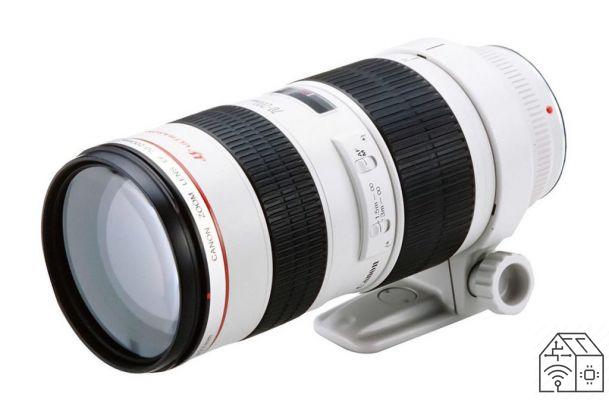
Finally, there are goals macro that allow you to get very close to the subject to photograph the smallest details. They do not have a well-defined range of focal lengths, but a feature to be taken into consideration when choosing macro lenses is also the distance. minimum focus. This is a fundamental value, which indicates the effective minimum distance at which you can get close to the subject and manage to focus.
How to choose the right camera
At the end of this speech you must also know there is an important aspect to take into consideration in the evaluation of focal lengths: I'm talking about the sensor magnification factor. If you have a full frame camera this is not for you, but if you have an APS-C or Micro Four Thirds sensor then you should consider doing some multiplication. Almost all APS-C cameras have a multiplication factor of 1,5x (Canon wanted to distinguish and it has a factor of 1,6x), while for the Micro Four Thirds the factor is 2x. What does it mean? It is soon said. On a camera whose sensor has a 1,5x magnification factor, a classic 50mm has an angle of view equivalent to that of a 75mm (50 × 1,5 = 75). Similarly it is easy to multiply by 2, so on Micro Four Thirds a 50mm will be equivalent to a 100mm. When choosing a goal, therefore, keep this variable in mind as well.
Zoom and fixed focal length
All the categories I have talked about so far, can then be divided into two further families, that of the zoom and that of the fixed focal length lenses. The former offer a variable focal length, while the latter, as the name implies, offer a single focal length.
In general, zoom lenses are clearly more practical as they can cover different situations with a single lens. Let's take the case of one of the most classic lenses, the 24-70mm: it is both a wide angle and a standard one. But there is even more, there are the zoom handyman, those like 18-200mm or 28-300mm.
 JAA829DA AF-P DX 70-300 mm f/4.5-6.3G ED VR Lens - Nero -...
JAA829DA AF-P DX 70-300 mm f/4.5-6.3G ED VR Lens - Nero -...
- Vibration Reduction (VR)
- The angle of view is 22 ° 50′-5 ° 20 ′
- Simplified control; Silent focus
A common mistake is to consider all zoom lenses telephoto lenses, I often hear the two words used as synonyms. They are not at all! There are many zoom lenses that are born wide angle and remain wide angle. An example would be the 12-24mm of Sigma which was hugely successful.
There is a reason, however, that professional photographers don't use all-round lenses as their only optics. Having to cover such a long focal range, the image quality they can guarantee is not the same as zoom lenses with a smaller extension or fixed ones. They are less sharp and cannot offer the same brightness. This is due to the fact that the optical design would require very large lenses inside to allow the light to reach the sensor without excessive dispersion. The costs of elements of this type would be too high and that is why less valuable materials are used that allow to keep the price affordable.
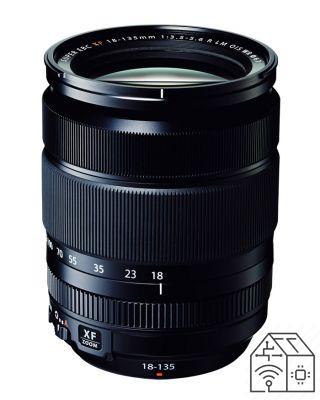
The most common zooms for a photographer are the aforementioned 24-70mm, which in a good standard kit is accompanied by a wide-angle zoom such as a 16-35mm or something even more extreme like the 14-24mm. These lenses are usually also associated with a telephoto lens such as the 70-200mm and in this way a photographer can try his hand at practically any photographic genre, relying on quality lenses. But building a kit of this type costs a lot of money, so before you get there I recommend that you take another path, especially if you are a beginner.
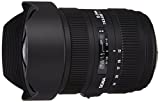 Sigma 12-24mm F4.5-5.6 EX DG Aspherical/HSM
Sigma 12-24mm F4.5-5.6 EX DG Aspherical/HSM
- Lens
- Sigma (Author)
In general, in fact, we have an incredible variety when it comes to zoom lenses: just take a look at the manufacturers' websites to realize this. So, to help you in the initial choice of a zoom, the suggestion is to take a lens such as a 55-200mm or a 70-300mm. The choice may depend on the type of camera to which the zoom will be mounted. First of all, a lens of this kind will not be too expensive (we can also find some for less than 200 euros) and will allow you to cover more or less all the focal lengths necessary for a first approach to photography. With standard optics you will have from wide angle to normal and with zoom from normal to telephoto.
This way you can try to find your way by having the tools you need to get started.
Don't worry about buying third party lenses, there are excellent manufacturers like Sigma and others like Tokina or Samyang who can offer really competitive prices.
Discount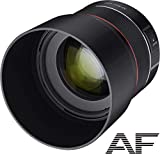 Samyang 22796 Compatible with Camera Niko, F AF 85mm F1.4
Samyang 22796 Compatible with Camera Niko, F AF 85mm F1.4
- Optical zoom: 0.0 multiplier_x
- Maximum focal distance: 85.0mm
The objectives a fixed focal length, on the other hand, they have no focal range, this means that the zoom can only be achieved with your feet, physically approaching or moving away from the subject. Fixed lenses, however, are those that are generally able to offer the best image quality. Using a 50mm lens will surely guarantee sharper results than using a zoom set to 50mm. The optical structure is less complex than that of a zoom and this allows the use of fewer lenses and therefore better light transmission. And if on the one hand we have some that can cost a fortune, on the other there are also some at very low prices. As usual, the difference lies in the quality of the materials used for the realization: the more precious the glass used, the higher the price and the quality in terms of sharpness they can offer.
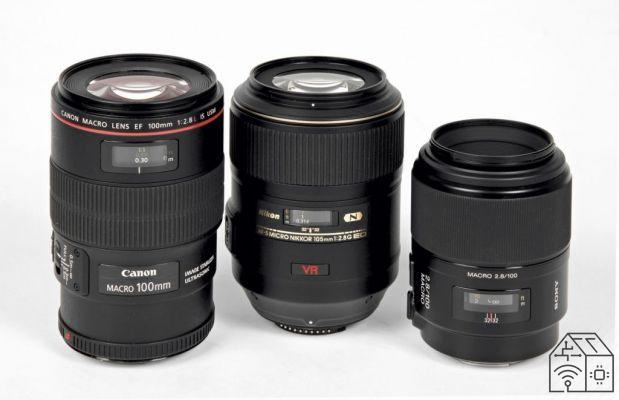
Among the fixed lenses we can also find many special lenses, such as macro or fisheye or very high telephoto lenses such as 400mm, 600mm and even 800mm.
Another feature that almost all fixed lenses have in common is the large aperture (indicated with the letter f) which allows a greater influx of light towards the sensor. More light that enters turns into a reduced depth of field and therefore a greater detachment of the planes.
Furthermore, the fixed are often an advantage also in terms of size, they can be very small and in particular on mirrorless cameras we can find some so thin as to be called "pancakes".
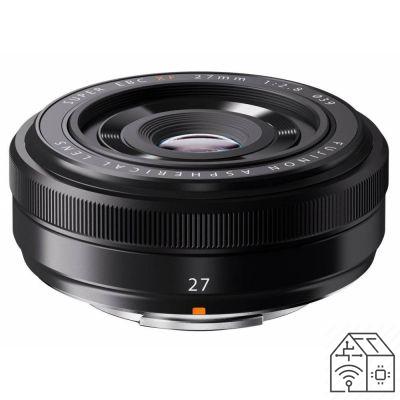
The first steps in the world of fixed focal length lenses can be made by spending little and taking home lenses such as a 35mm f / 1,8 or a 50mm f / 1,8 that could cost you even less than 200 euros each. It depends from manufacturer to manufacturer and also on the sensor format of your camera.
How to choose a lens: the aperture
Once you have identified the focal length of the lens to buy, you can run into situations that are difficult to understand instantly. For example, you may have opted for a 50mm lens and find yourself facing two totally different prices despite the fact that the brand is the same: 150 euros (approximately) and over 1000. What does it depend on? One of the factors that most affects the price of a lens is the aperture or focal aperture. It is measured in f-stops and the lower the number the more light a lens is able to capture.
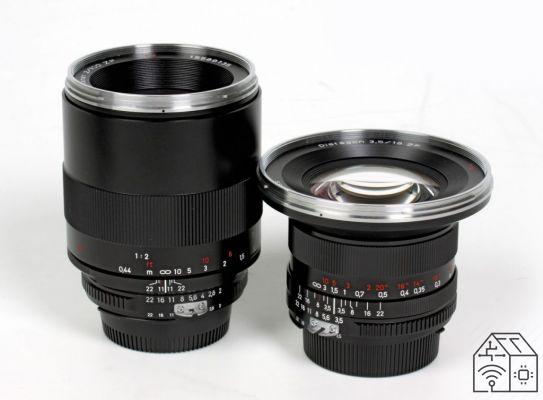
Let's stay on the example of the 50mm, to give exact figures let's take into consideration the alternatives that Canon presents in the price list. There is a version sold for around 130 euros, one for 325 euros and a last one for as much as 1130 euros. Next to each 50mm wording you will also see the value of the maximum aperture it offers and although it changes very little, the differences are great. The cheaper version has an aperture of f / 1,8, the middle version has f / 1,4 and the more expensive version has a maximum aperture of f / 1,2. I must point out that the more expensive version also differs in the type of glass used for the lenses and the materials of the body: these aspects also have their weight on the final price. The f / 1,2 version of the 50mm is part of the L range, which Canon's professional lenses identify, and you don't need to aim that high to begin with. But if you still do not plan to use flash and above all to shoot often in low light conditions it will be essential to opt for a lens with a maximum aperture equal to or less than f / 2. This aspect will allow you to shoot with even in critical conditions.
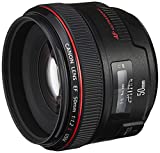 Canon Lens, EF 50mm 1.2L USM, Filter Diameter: 72mm
Canon Lens, EF 50mm 1.2L USM, Filter Diameter: 72mm
- 50mm lens with a maximum aperture of f / 1,2
- Canon EF lens
- Minimum focusing distance: 45cm
Most budget lenses, except the fixed ones I just told you about, have a variable aperture. This means that based on the focal length at which you shoot we will have a different maximum aperture available. For example, in the case of the classic 18-55mm kit lens the aperture is usually f / 3,5-5,6. It means that at the minimum focal excursion (18mm) you can count on a maximum aperture of f / 3,5, while at the maximum excursion (55mm) only f / 5,6. In practice this means that when photographing at 55mm this lens loses 1 and a half f-stops and therefore the light that can filter through the optical scheme will be less than half of what happens at 18mm.
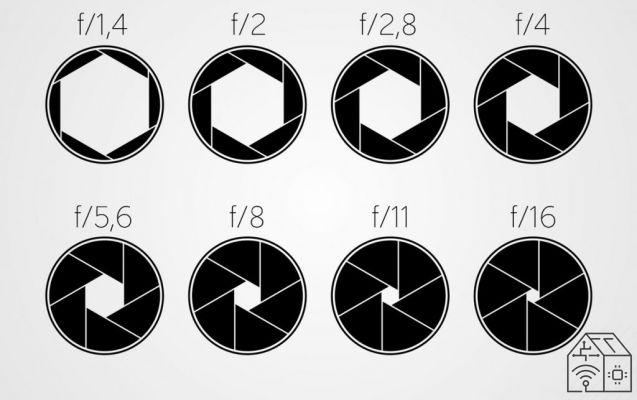
Professional zooms, such as the 24-70mm I mentioned earlier, have a fixed aperture of f / 2,8 instead. Thanks to the optical construction, therefore, they are able to maintain the same maximum aperture throughout the focal range. It is no coincidence that these objectives cost around 2000 euros.
To give you some more examples, almost for information only, there are also lenses that see more than the human eye in practice and have apertures lower than f / 1. In particular, I mention two, the Leica Noctilux 50mm f / 0,95 and the almost namesake Nikkor Noct 58mm f / 0,95 for Nikon's Z-series mirrorless cameras. The price of lenses of this kind is really high, the Leica one exceeds 10.000 euros, while the Nikkor one is on sale for “only” 8990 euros!
Optical image stabilization
While many mirrorless cameras today offer integrated optical stabilization on the sensor to reduce blur, it is not the same for SLRs. It is for this reason that many optics can rely on a optical stabilization system, which is to prevent unintentional movement when shooting to make images sharper. Each manufacturer has its own wording for these systems: for Canon there is IS (Image Stabilization), for Nikon there is VR (Vibration Reduction), Sony has its OSS (Optical Steady Shot) and so on.
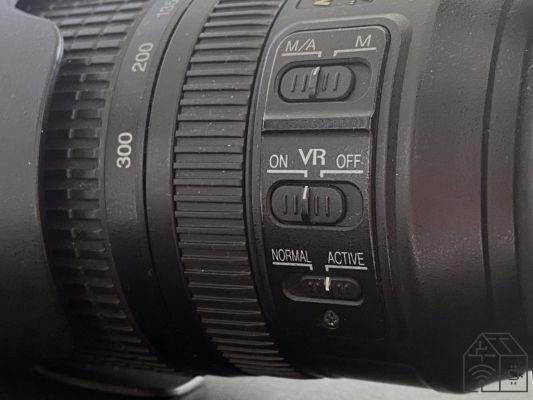
Image stabilization is a function that is not necessary for every photographic genre and for every situation, but, especially in low light conditions when shutter speeds get longer, it allows us to take the results home. It is also very useful when shooting with long focal length lenses, while we can do without it with fixed lenses with a large aperture. In fact, it is not common to find a stabilization system on fixed objectives.
How to choose a lens: autofocus
Last but not least there is one last, but very important issue to address before choosing a goal. I'm talking aboutautofocus. There are some photographic genres for which it is essential to have a good autofocus today, such as street photography, sports photography or nature photography. In all three cases, these are situations in which it is essential to capture the moment and therefore speed, but also silence, are fundamental. There are various types of focusing systems, more or less performing and also in this case the choice can be determined above all by the budget. Also keep in mind that some manufacturers still have many options on their list with manual focus only and that with lenses equipped with AF we can always choose to use manual focus as well. In some cases even when the automatic mode is activated, perhaps to intervene and choose the focus point more precisely.
How to choose a goal: conclusions
Choosing the right lens depends above all on what you want to photograph. As already mentioned, the first step in building a photographic kit is to choose that they allow us to cover all focal lengths between 18 or at least 24mm and 200mm. You can do this by investing everything in a single all-rounder lens that allows you to travel light and never have to change lenses when you are out and about, or by selecting lenses other than the shorter focal range and which will surely offer greater image quality. The choice can clearly also depend on the budget available. Personally, the first steps in the world of photography I faced them with a 50mm f / 1,8, a 24-70mm and a 70-300mm.
The first because it represents a big step forward compared to the 18-55mm that I had in the kit on my reflex and it allowed me to start playing with the depth of field and the blur thanks to the wide aperture. The 24-70mm because apparently every photographer must have one in their backpack, but above all because it is a zoom with which to deal with most photographic genres.
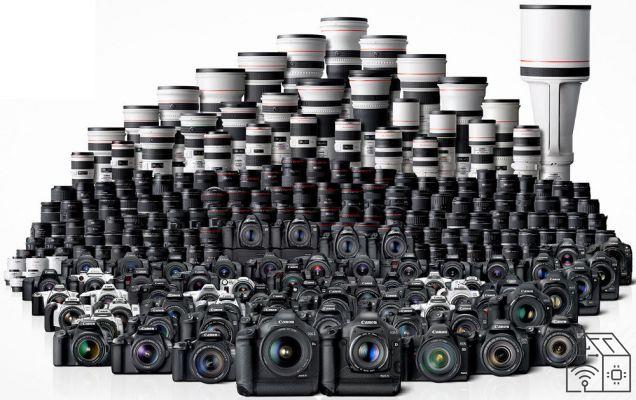
The 70-300mm zoom was a forced choice because professional optics, such as the 70-200mm have significant costs that are not worth facing if it is not strictly necessary. With the 70-300mm zoom you just have to be careful not to use it in low light conditions or perhaps to photograph sports that take place in indoor arenas. But it certainly represents one of those optics that is best to have in your bag.
And to start expanding your kit also remember that it may be wise to think of lenses made by manufacturers such as Sigma, Tokina or Tamron to save some money to invest in other useful equipment. These manufacturers, however, guarantee excellent optics so don't be put off by the fact that they don't have the same brand as your camera.
I almost forgot, don't call lenses lenses, lenses are the ones inside the lenses!
OfferBestseller No. 1 Physical examination of the musculoskeletal system
Physical examination of the musculoskeletal system
- Gross, Jeffrey (Author)
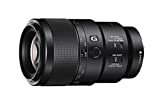 Sony FE 90 f / 2.8 G | Fixed Focal Macro Lens, ...
Sony FE 90 f / 2.8 G | Fixed Focal Macro Lens, ...
- SHARPNESS FROM MACRO TO INFINITY: The floating focus system reduces the size of the lens while still ...
- BLURRED BACKGROUNDS: Smooth bokeh is supported by a circular 9-blade aperture mechanism with results ...
- RELIABLE: A dust and moisture resistant design provides the reliability you need for outdoor use in ...


























